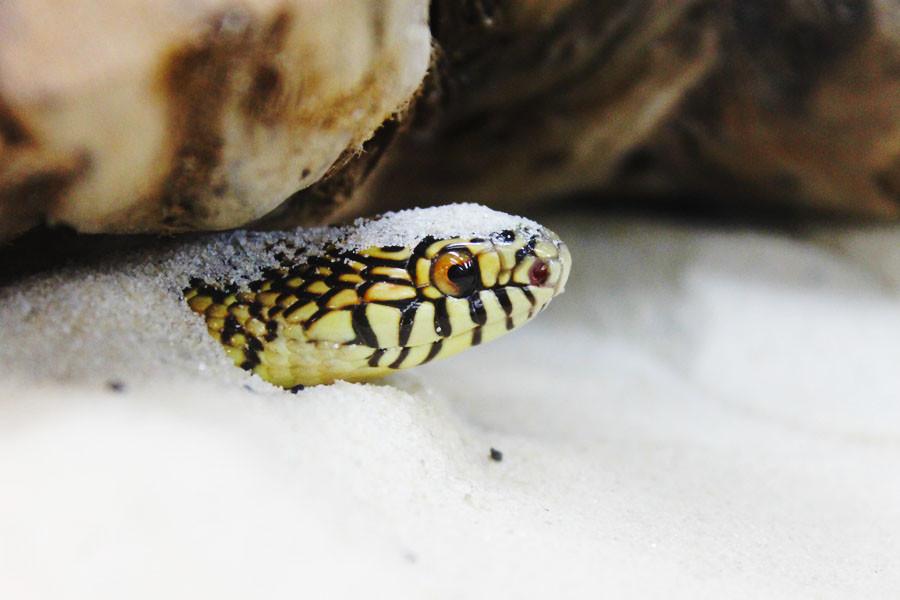As global warming causes temperatures across the US to rise, a growing population of invasive Burmese pythons has steadily begun migrating north from the Florida Everglades. Will Central Floridians and places even farther north soon find pythons in their backyards?
“It’s like something out of a horror movie,” said Aerial Mitchell, a sophomore at SHS.
It is believed that Burmese pythons, originating in Southeast Asia, were first brought to Florida as pets and then released into the Everglades when they grew too large to handle. The first Burmese python in the Everglades was recorded in 1979.
Since then, the snakes have been growing in size and number, and just this May a record-setting Burmese python, 18 feet and 8 inches long, was found roaming in the underbrush on the side of a Miami road. Jason Leon of Miami, unaware of the snake’s full size attempted to capture the python, and after struggling to avoid being bitten as the python coiled around him, used a knife to kill the snake. It was reported that the Florida Fish and Wildlife Commission sent Leon an email thanking him for killing the snake and turning it in, as Burmese pythons are an invasive species that take over an ecosystem.
The Burmese pythons are breeding in the wild, and their population is increasing as they dramatically change Florida’s natural environment. They are carnivores, and eat almost every animal in Southern Florida, from birds and small mammals to Alligators and even deer.
Florida snake expert Steve Masek knows what it’s like to be attacked by a Burmese Python. Appearing on an Animal Planet special, he described the snake’s power.
“As soon as they latch on, it’s instinct to wrap. If you can’t get your hands up in there quick enough to keep it from your throat, it could choke you out,” he exclaimed.
In 2011, a study was conducted revealing that the invasive pythons had almost fully caused all bobcats, opossums, raccoons, and white-tailed deer to disappear from the Everglades, and rabbits were nowhere to be seen. The large decrease of these native Florida species coincides with the population increase of Burmese pythons.
While it is uncertain exactly how large the population of Burmese pythons has become, records by the US National Park Service reveal that between the years 2005 and 2007 alone, the number of Burmese pythons captured and taken from the Everglades more than doubled. There had been hope that the snakes would be restricted from spreading by the many areas of water between masses of land in the National Park, but in fact Burmese pythons are great swimmers and can survive in seawater for long amounts of time. Increasing the population’s ability to grow and spread out farther into the U.S is the fact that the female pythons can lay a nest of up to 100 eggs at a time, and Burmese pythons do not come in close range with each other aside from mating, causing them to spread further.
In order to get an idea of just how far north into the U.S. the pythons could migrate and survive, researchers in a 2009 experiment transported 10 Burmese pythons to live in contained environments in South Carolina. The study was performed to discover how cold temperatures could be to remain suitable for the pythons. The snakes survived through summer, fall, and 12 days into December until temperatures fell below freezing for longer periods of time and all of the snakes died. These results led to predictions that Burmese Pythons could survive in climates as far north as South Carolina.
“That’s scary,” said freshman Christian Nazario. “Hard to know that I could go out of my house and be eaten by a python.”
People are unsure of ways to prevent the snakes from spreading north, and in efforts to control the population python-hunting is encouraged. Groups in South Florida even host hunting contests with over $1000 prizes for the biggest pythons caught and the most pythons caught.
“I think that’s a good idea,” said freshman Alexandra Padilla in response to the python hunts.
As the invasive Burmese python population continues to grow and take over Florida’s natural ecosystem, soon many people won’t be too surprised to find an 8-foot-long snake slithering through their yard.





















